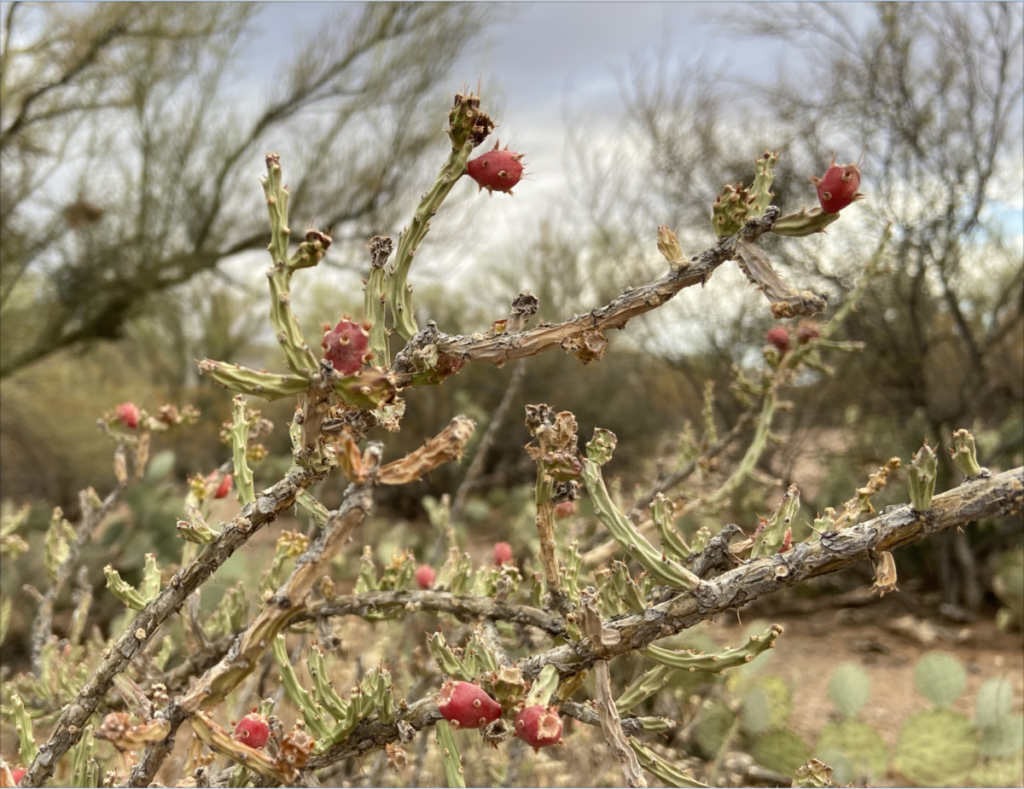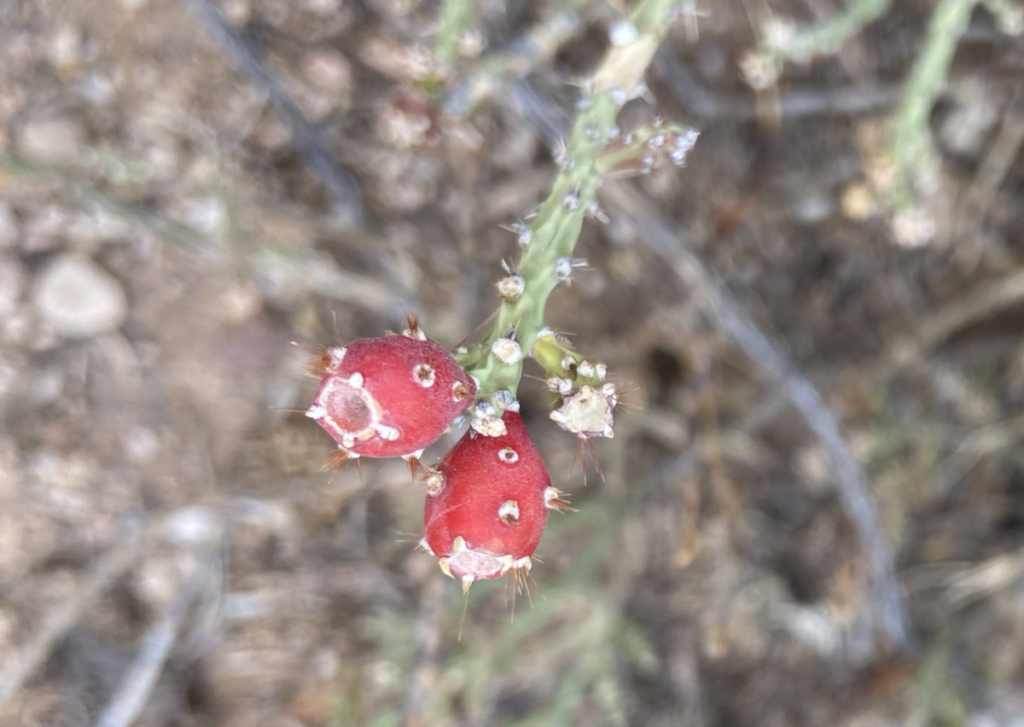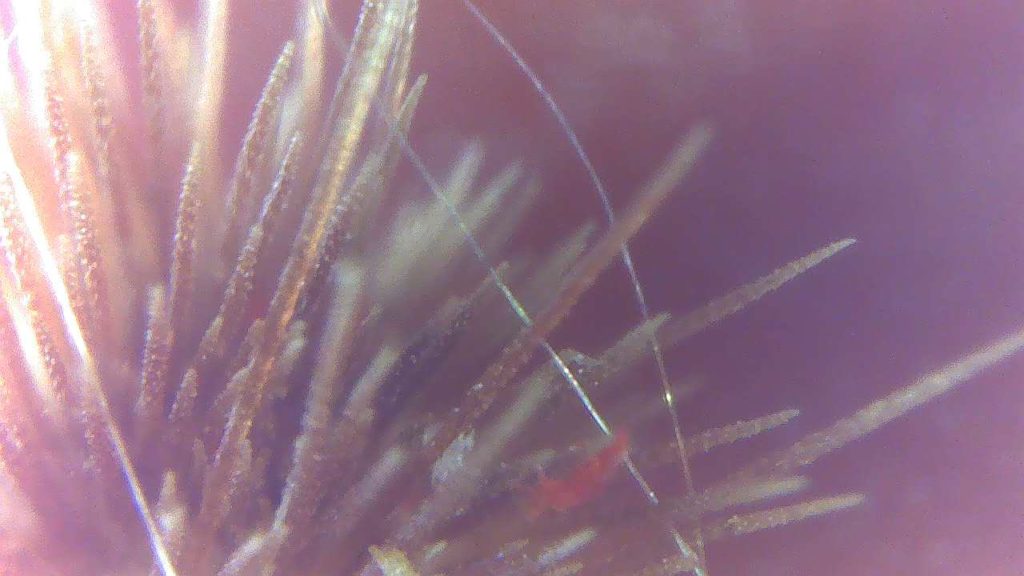
Wrinkled, slender stems of Cylindropuntia leptocaulis show how dry the summer was in the Sonoran Desert this year and yet still boast the colorful red fruits that give this plant its English common name of Desert Christmas Cholla.
When you zoom in closer and closer to living things you encounter in the Sky Island region, it’s amazing what you find! I was recently drawn to look more closely at the Desert Christmas Cholla (Cylindopuntia leptocaulis) growing in my yard. Its scientific name means cylindrical slender stem, a fitting name for this short and branching cactus abundant in the Sonoran Desert. The common name must derive from the vibrate red fruits that appear in the fall and stay on the plant through the winter.
The red fruits are about half an inch long and resemble the fruits of prickly pear, only much smaller. As with the prickly pear fruits that are edible for people and wildlife, the Desert Christmas Cholla fruits are edible too. Instead of spines, the fruit exterior is adorned with patches of barbed prickles, also known as glochids.

Barbed prickles, or glochids, arise from discrete cushion-like patches on the fruit’s red exterior called areoles. These are a form of plant epidermal hair, found in the Opuntia cactus family (prickly pear family).

Under magnification, the tufts of glochids are arranged like a cluster of stalagmites radiating outwards. The glochids provide defense from herbivores. Close examination of the barbed surface of each glochid is a clear reminder of why these prickles are so irritating once lodged in one’s skin and difficult to remove. Also visible is a red velvet mite crawling over the barbs with ease.
When I looked at the Desert Christmas Cholla fruit under a microscope, a brilliant red creature immediately caught my eye. It was a red velvet mite, a common arachnid in the Sonoran Desert that emerges from the soil during the summer once the rains begin. We certainly didn’t have much rain this year, but nonetheless this mite was cruising around, likely looking for a meal such as an ant or termite.
Enjoy this microscopic hunter explore the barbed prickles of Desert Christmas Cholla in search of its next meal:
When you look closely, you’ll find amazing life all around. We offer a special thanks to Pam Rossetter for the generous contribution of a microscope to help us explore and celebrate the tiniest wonders of the Sky Islands.
References:
Bower, N., R. Bower, and S. Tekiela. Cactus of Arizona—Field Guide. Adventure Publications, Cambridge, MN. 2008.
Hoffmann, Buzz. Red Velvet Mite. Sonora-Arizona Desert Museum Friday Docent Weekly Update, August 2, 2013.
Wikipedia. http://en.wikipedia.org/wiki/Trombidiidae

